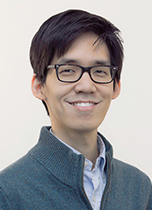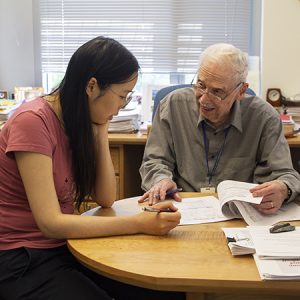
The U.S. Department of Energy’s Water Power Technologies Office recently announced support of up to $22 million for 10 marine energy research projects, including three represented by researchers from Oregon State University’s College of Engineering. (The award amounts for each project are under negotiation.)
“For industry to move toward commercialization, we need to utilize all of our available resources,” said Daniel R. Simmons, assistant secretary for energy efficiency and renewable energy, in a Dec. 22 article on the DOE website. “With this funding opportunity, we addressed several critical gaps in the marine energy industry to advance early-stage R&D and build testing infrastructure, as well as foster collaboration among non-federal research entities.”
One of the proposed projects, led by Oregon State, will consider the co-design of marine energy converters for autonomous underwater vehicle docking and recharging. Two partner institutions, the University of Washington and the University of Hawaii at Manoa, will play supporting roles.
“No one has been able to design a system to reliably dock an autonomous underwater vehicle with a marine energy converter in energetic ocean conditions,” said Geoff Hollinger, associate professor of mechanical engineering and robotics and Oregon State’s principal investigator for the energy converter project. “We would be the first to do that. It would open up a huge new market for inspection, monitoring, and repairs in marine energy systems without relying on expensive ship support.”
Testing will be conducted in the O.H. Hinsdale Wave Lab at Oregon State.
In a second project, researchers will test models for integrating marine energy into microgrids. Oregon State will support the work, which will be led by the University of Alaska Fairbanks.
Microgrids are local energy grids that can be connected to the main energy grid or operated independently.
“Over the past few years, there’s been agreement on what are good models for wind generation and other renewable energy sources, but models for marine hydrokinetic converters need further validation and benchmarking,” said Eduardo Cotilla-Sanchez, associate professor of electrical and computer engineering and Oregon State’s principal investigator for the microgrid project. “I’m most excited about bringing together the marine microgrid environment and the expertise of on-shore power engineers to leverage their historical knowledge of how to run power systems efficiently and safely, while advancing new forms of clean energy that the ocean provides.”
For the third project involving the College of Engineering, researchers will pursue the development of modeling methods that facilitate the design of wave energy converters. The venture will be led by the University of Washington and supported by Oregon State and the University of Alaska Fairbanks.

Wave energy converters transform the kinetic and potential energy of ocean waves into mechanical or electrical energy.
“Our objective is to develop models for wave energy converters that bring electrical, hydrodynamic, and mechanical domains under one framework and that lead to improved simulation speed, flexibility, and design,” said Ted Brekken, professor of electrical and computer engineering at Oregon State and one of the researchers representing the team focused on the model’s electrical components.
Bryson Robertson, associate professor of coastal and ocean engineering at Oregon State and principal investigator for the wave energy modeling project, offered a broader context about the potential impact of all three endeavors: “The work will help to fill fundamental gaps in our knowledge of marine energy sources and to overcome barriers to the development of emerging technologies,” he said. “Ultimately we hope it leads to reduced costs and improved performance of renewable marine energy.” The projects will also offer cross-disciplinary research experiences for College of Engineering students.
— By Steve Frandzel

 Just one of 23 students selected from across the world,
Just one of 23 students selected from across the world, 














